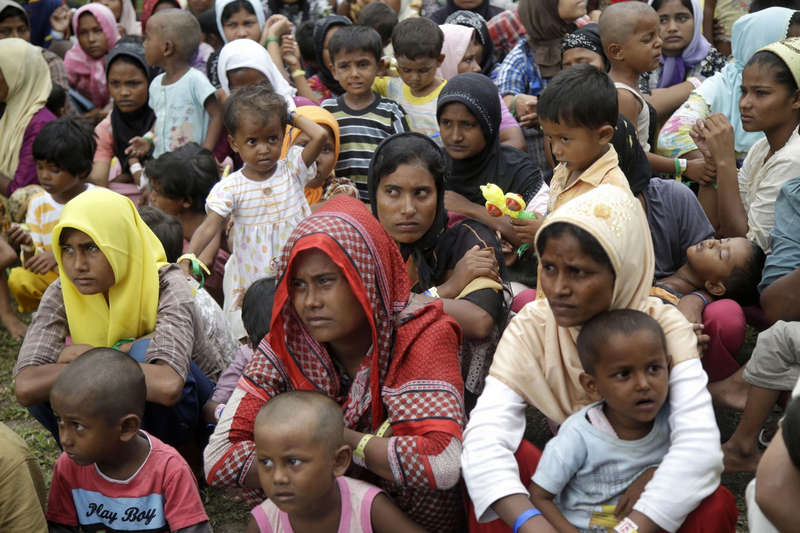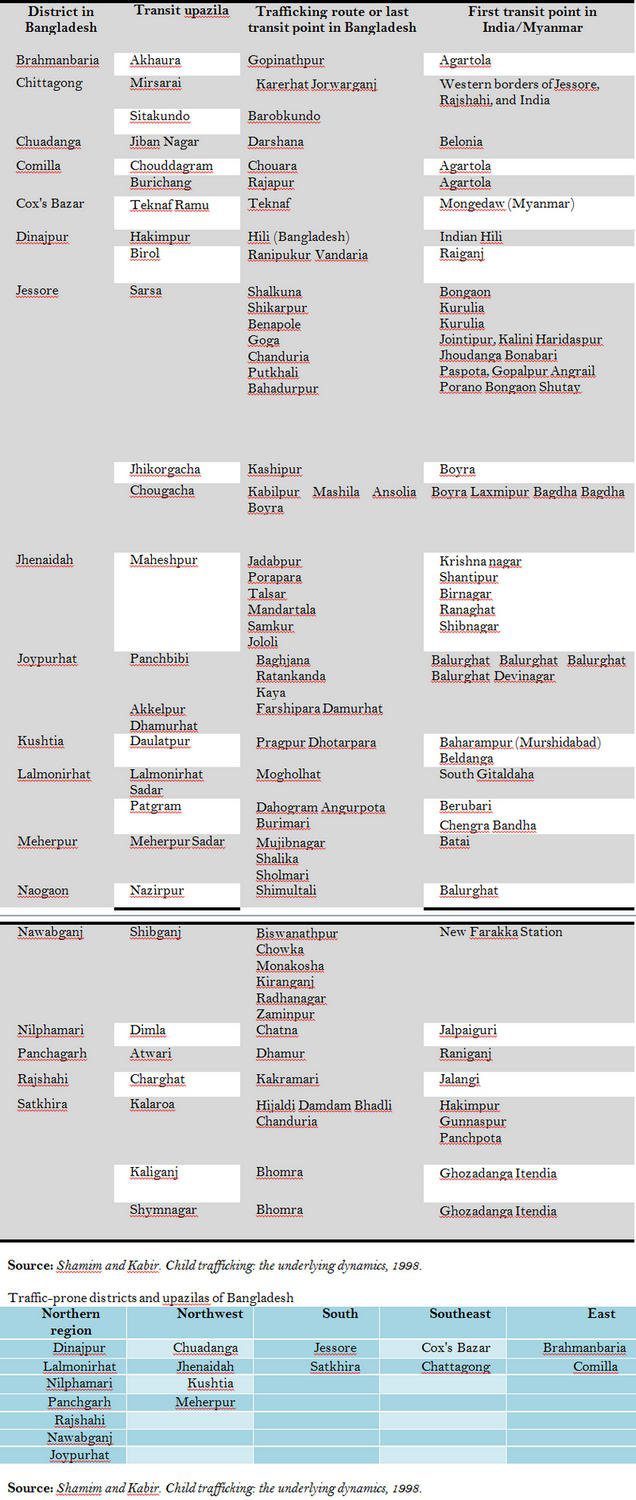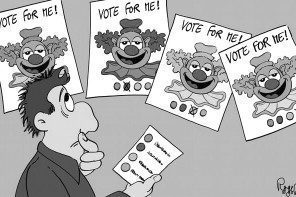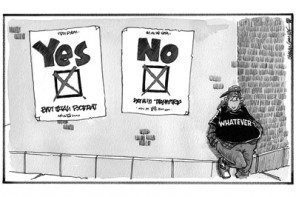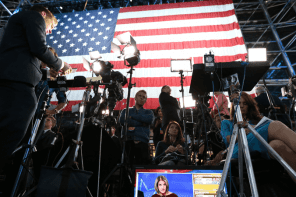Boat people in Bay of Bengal and grave sites found in a mountainous area of southern Thailand both are interrelated and two different side of same coin- Illegal Migration. In both the cases issue is attempt of illegal migration and trafficking. Here hardly any difference between illegal emigration and trafficking. This is not the first attempt of illegal emigration or case of trafficking. It is neither not the first time people killed brutally nor living as dead. Not surprisingly there are number of victims are women and children. There will be many questions regarding the issue, however, main question would be why these women and children broad in to the boat and put their life into stake. Is it their internally or externally forced decision, which provoked them in the voyage of danger?
Facts
Fifty percent of total international migrant populations are women according the study of International Migration Organization (IMO). Amazingly, only five percent of international migrants from Bangladesh are women. International migration from Bangladesh was started officially from 1976; female migration expressed its notable existence only from 1991. There were several bans on women migration from Bangladesh on lower level of jobs up to 2001. After withdrawal of major bans on female migration in lower level of occupation, it shows positive trend. According Bureau of Manpower Employment and Training (BMET) records women workers constituted 0.54 per cent of the total number of Bangladeshi workers who migrated overseas in 2002. In 2012, this percentage was up to 6.14, and by the middle of 2013, the percentage stood at 13 and growing. A total of 276,262 female workers went abroad with jobs from 1991 to 2013. Women migration takes place in 51 countries only. Of them, the maximum number went to Middle Eastern countries as housemaids. The official figure of migrant women workers having emigrated is certainly much lower than actual number of Bangladeshi women who have gone abroad for work. At a recent workshop of experts held in Dhaka, participants estimated that only 40 per cent of migrant women workers migrate through recruitment agencies, while the remaining 60 per cent head abroad with the help of true well wisher(!)- Agent or traffickers. The data suggests that to date, Bangladeshi women have accounted for just a small fraction of labor migration from Bangladesh – just 2.9 per cent of all migrants who emigrated via official channels. Others are relying on way of invisible corridor of illegal migration or channels of trafficking.
In a way to facilitate the illegal migration to overseas, human trafficking reemerged and expanded. Human trafficking is one of the large ongoing illegal global trades. Human trafficking could be considered as postmodern slave trade. The main domain of human trafficking is forced labor and sex trafficking. Women, adolescent girls and children are the primary constituents of sex trafficking. Internationally, women and children from Bangladesh are trafficked to Middle East via India and Pakistan for commercial sexual exploitation or forced labor. Rohingyan refugees also are subjected to human trafficking in Bangladesh. Illegal migration has been happening for many years, but the number of people attempting this journey is on the rise. According to the United Nations High Commissioner for Refugees, in the first three months of 2015, about 25,000 people illegally migrated. Traffickers are now trying extortion for more profit. “Illegal trafficking to Malaysia has been going on for a long time, but years ago the traffickers were upfront and the families knew that a phone call would come and they would have to pay. Now deception is common,” said Stina Ljungdell, the UNHCR representative based in Bangladesh (Aljazeera, 2015). Bangladesh economy grew by 6 percent for last couple of year but youth unemployment remains at 10 percent and domestic salary scale are far lower than what can be obtained abroad. Legal route for Bangladeshi citizens to obtain work in Malaysia available, even though people are, choose risky voyage of boat because there are hurdles of bureaucratic barriers in legal emigration.
Bangladeshi women migrant workers’ international migration is increasing because of livelihood crisis, internal displacement due to the natural calamities and demands of workforces in the global labor market. Along with the opportunities of international migration, trafficking of women and children also increased. Women and adolescent girls of Bangladesh are increasingly becoming more and more victim of human trafficking. The main vulnerable characteristic of a ‘potential’ victim is a strong desire to improve livelihood by travelling away from their home and Climate refugee or internally displaced people searching for shelters. Foremost victim of human trafficking are overwhelmingly women and adolescent girls. Victims are forced into prostitution, or to work in quarries and sweatshops, on farms, as domestics, as militia/hired soldiers, and in many forms of involuntary servitude.
Prostitution is the major impetus in trafficking. A 2006 study on the commercial sexual exploitation of children (CSEC) found that nearly 27,000 Bangladeshi women and children have been forced into prostitution in India, and around 40,000 children from Bangladesh are involved in prostitution in Pakistan (UNICEF, 2007). According to the study, over 1 million women and children were trafficked out of the country in last 30 years and many of them were forced to become prostitutes, domestic helps, camel jockeys and beggars. A UNICEF report says that approximately 400 women and children in Bangladesh are victims of trafficking each month. Another study reports 300,000 Bangladeshi children and women have been trafficked to India alone in the last 10 years (UNICEF, 2009).The annual report of an organization based in Pakistan called Lawyers for Human Rights and Legal Aid reveals that nearly 200,000 Bangladeshi girls and women were sold in Pakistan (2009). In a report of India’s Kerala State Police stated, Bangladeshi adolescent girls are collected by Indian trafficking networks from many rural districts, in exchange of Tk 30,000 to Tk 40,000 to the ‘procurer’. These ill-fated adolescent girls are then taken to India and sold off to different brothels and residential hotels, where they are forced into prostitution. Good-Looking adolescent girls and women are trafficked to Pakistan or the Middle East. It is believed that about 4,500 women and children from Bangladesh are trafficked to Pakistan annually. On the other hand, Bangladesh boys in the ages between 4-12 years are trafficked for camel racing in the Gulf; sexual exploitation of these boys by the employers in not uncommon (UNIFEM).
Factors
The causes, consequences and types of migration are highly dependent on the social and ecological contexts to and from which people move (Locke et al. 2000). Beddington (2011) describes five categories that drive migration: social, political, economic, environmental and demographic. These five drivers might interact or overlap in different ways in different places. Of these five categories, climate change is primarily influence the ‘environmental driver’ of migration. It will influence the ‘economic driver’ by affecting employment opportunities, income, wages and well-being. Environmental push factors for international migration are- natural disaster, inadequate condition of living and consequential internal displacement. Environmental international migration pull factor are gentler Environment in terms of attractive climate and living conditions and opportunities of livelihoods.
One main reason of migration is that, for both men and women, overseas employment can reduce poverty and secure livelihood. The Bangladeshi people have used migration as a poverty-alleviation strategy for many decades (Buchenau, 2008). Bangladeshi women would not migrate if they or their families were in a vulnerable situation. While poverty may drive women to migrate through regular, documented channels, it also leaves potential migrants who do not have ability to pay the high recruitment and migrations cost; or are underage more vulnerable to traffickers and smugglers.
According the Human Trafficking Investigation monograph of Bangladesh Police, The principal causes of trafficking in human beings are described as The “Push and Pull‐
Factors”. In the country like Bangladesh there is grinding poverty and little prospect for sustained economic opportunity, especially for women; consequently, a constant supply of victims remains available for exploitation caused as the push factor. On the other side, in the Middle Eastern countries there are growing sex markets and requirement of bondage labor or other forms of exploitative services fuelling an increasing demand for the services of the victims worked as a pull factors. Organized criminal networks using the opportunity of demand-supply of manpower for labor and sex to traffic and exploit the victims in order to generate vast profits for themselves. The sex market outlets hardly checked and challenged by law enforcement agencies and are encouraged by corrupt practices. Whilst it is a fundamental fact that the criminal phenomenon that is human trafficking is based upon a simple economic equation of ‘supply and demand’, the risks to a country are considerable. If we investigate demand of the seen and unseen global labor market-There are demands for bondage labor, rented soldiers, sex workers. Only women and children are more compatible with these demands. Factually, women and children are easy and highly desired target of human trafficking.
Ways of Trafficking
History of trafficking suggests that poor women and children are the key target group of trafficking, because of their marginalization, limited economic resources and predominance in the “invisible” informal sector. The major portion of trafficked women and girls are those who are unmarried, divorced, separated or widowed. The ethnic minorities, “scheduled castes” or “other backward classes” indigenous people, hill tribes, refugees, and illegal migrants also falls prey to the human traffickers around the world (UNIFEM). Human trafficking is influenced by two factors, namely, demand and supply factors. Demand factors indicate the demand side and the supply factors indicate the supply side of the whole business in human trafficking.
In Bangladesh, various ways are practiced for the procurement of women and children for trafficking purpose. One of these practices is procuring young girls through marriage. For this purpose, men are being employed outside the country. They come back to their village homes to get married. After marriage, the young wife accompanies the husband to his place of work and since then, no trace could be found of these young girls.
The other way is that the traffickers entice young girls that they would provide them with jobs and better prospects in other countries (Shamim, 1997). “What is alarming is that a large number of garment factories are now acting as recruiting stations for the traffickers” (Star, October 6, 2000). In other cases, sometimes, parents also sell their children to the traffickers because of poverty and hunger (Shamim, 1997). Kidnapping is another way that is being practices for the procurement of women and children for trafficking.
Routes of Illegal Emigration or Passage to Trafficking
The South Asia-Gulf Region trafficking route affects Bangladesh. Bangladesh has a 4,222-km long border with India and a 288-km common border with Myanmar. Twenty-eight of the 64 districts of Bangladesh have common borders with India, and two have borders with Myanmar. Several reports over the years reveal that traffickers use 20 main points in 16 south/south-western districts of Bangladesh near the Indian border to run their trade (Violence against Women in Bangladesh, Bangladesh Women Lawyers Association, Dhaka: 2002). Major internal and cross border land routes for trafficking are-
Legal Framework to Encounter Human Trafficking
Existing laws or acts to encounter human trafficking are-
- Overseas Employment and Migration Act 2013.
- The Human Trafficking Deterrence and Suppression Act 2012.
- The Women and Children Repression Prevention Act of 2000 (The act amended in 2003).
- The Prevention of Oppression Against Women and Children 1995 (Special Act).
- The Children Act 1994.
- The Suppression of Immoral Trafficking Act of 1933.
- The Penal Code of 1860.
Prescribed penalties under these acts range from imprisonment for ten years to the death sentence; the most common sentence imposed on convicted sex traffickers is life imprisonment. These penalties are very stern and commensurate with those prescribed for other serious crimes, such as sexual abuse and rape. Article 374 of Bangladesh’s penal code contained forced labor, but the prescribed penalties of imprisonment for up to one year or a fine are not sufficiently stringent to deter the offense. The Bangladeshi judicial system’s handling of sex trafficking cases continued to be plagued by a large backlog and delays caused by procedural loopholes. Most sex trafficking cases are prosecuted by the 42 special courts for the prosecution of crimes of violence against women and children spread throughout 32 districts of the country, which are generally more efficient than regular trial courts. The Bureau of Manpower Employment and Training (BMET) shut down, cancelled the licenses, suspended registration and fined number of recruiting agencies. The government created a 12-member police anti-trafficking investigative unit that complements an existing police anti-trafficking monitoring cell. National Police Academy provided anti-trafficking training to 2000 – 5000 police personnel every year.
Encountering Trafficking of Women and Children
Human Trafficking is illegal according constitution of India and Nepal. Unfortunately, constitution of Bangladesh does not recognize the issue of human trafficking specifically. Constitutional clauses relating to basic rights can be used as a shield for the victims of human trafficking. The Bangladeshi government made modest efforts to prevent human trafficking over the reporting period. The government’s inter-ministerial committee on human trafficking, chaired by the Home Minister, continued to meet monthly, though its work was largely confined to addressing sex trafficking. The government disseminated anti-trafficking messages in various forms, including public service announcements, dramas, public discussions, and songs, on the government-run television channel and radio network. The government failed, however, to take measures to prevent fraudulent recruitment that could lead to debt bondage. The government has allowed Bangladesh Association of International Recruiting Agencies (BAIRA) to set fees, license individual agencies, and certify workers for overseas labor, while not exercising adequate oversight over this consortium of labor recruiters to ensure that their practices do not facilitate the debt bondage of foreign workers. The Bangladeshi government provided anti-trafficking training to its troops being deployed for peacekeeping missions abroad.
Social and economic vulnerabilities of women and adolescent girls hardly give options to eke out a livelihood. They easily become pray of human trafficking racket. Traffickers can easily procure women and children by alluring with promises and hopes of a better life. Along with comprehensive enforcement of law, we have to prioritize fight against rural poverty and unemployment unless trafficking of women and children will continue to rise. We have to ensure inclusive social securitization for women empowerment and social protection of adolescent girls.
We need to incorporate encountering human trafficking objectives into our national anti-trafficking policies and programs. We have to ensure criminal prosecutions and punishments for all forms of illegal migration and labor trafficking, including those involving fraudulent labor recruitment and forced child labor. Law and enforcement agencies have to ensure in-depth investigation and prosecute government officials who may be suspect of complicity in trafficking. Bangladesh’s international recruiting agencies have to ensure they are not promoting practices that contribute to labor trafficking and provide protection services for trafficking victims and victims of forced labor. We have to ensure that we are penalizing only the facilitators and organizer of illegal migration and human trafficking network. Network of illegal migration closely attached with the human trafficking network.
Prevention is better than prosecution and protection. We should have specific legal safe guards and social securitization for women and children. Government and Society have to be focus on livelihood and social security of women and children. Inclusive nationwide awareness program need to be taken to alert the communities and individuals. In the national level, we have to strengthen our border security and cross border relations with border forces of neighboring countries to encounter illegal migration and human trafficking. Internationally and nationally, Government has to be proactive with emigration process and we should have a comprehensive emigration process. We yet to have specific clause on human trafficking in our constitution. Immediately we need to insert specific clauses to the constitution on human trafficking issue and safeguards for women and adolescent girls, enforcing existing laws and raise awareness to put an end to human trafficking of Bangladeshi citizens.
Reference
01. Ali S. Trafficking in children and their commercial sexual exploitation in prostitution and other intolerable forms of child labour in Bangladesh: country report. Dhaka: Bangladesh National Women Lawyers’ Association, 1998. 63 p.
02. BMET, 2014. Bureau of Manpower Employment and Training, Government of the Peoples’ Republic of Bangladesh, Dhaka. (From http://www.bmet.org.bd)
03. Buchenau, J. 2008. Migration, remittances and poverty alleviation in Bangladesh: Report and proposal (Dhaka, UNDP).
04. http://america.aljazeera.com/articles/2015/6/10/In-Bangladesh-human-traffickers-rely-on-silence-and-extortion.html
05. http://www.thefinancialexpress-bd.com/2015/06/02/95008[Accesed in 02-Aug-15 1:24:35 AM]
06. Joint Statement by UNHCR, OHCHR, IOM and SRSG for Migration and Development: Search and rescue at sea, disembarkation, and protection of the human rights of refugees and migrants now imperative to save lives in the Bay of Bengal and Andaman Sea, Press Releases in May 19, 2015 (From http://www.unhcr.org/555aee739.html.
07. Press Release, UNICEF, A Call to Action on Birth Registration, (Nov. 3, 2007), available at: http://www.unicef.org/bangladesh/media_977.html.
08. Shamim I, Kabir F. Child trafficking: the underlying dynamics. Dhaka: Center for Women and Children Studies, 1998. 88 p.
The writer is a Research Assistant at University of Manchester and member of Editorial Team, FAIR.

